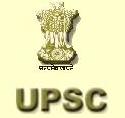
Special Instructions to Candidates
for objective type tests
Appendix - IV
1. Articles permitted inside Examination Hall
Clip board or hard board (on which nothing is written), a
good quality H.B. pencil for making responses on the Answer Sheet, eraser,
pencil sharpener and a pen containing blue or black ink. Answer Sheet and sheet
for rough work will be supplied by the Invigilator.
2. Articles not permitted inside Examination Hall
Do not bring into the Examination Hall any article other than
those specified above, e.g., books, notes, loose sheets, electronic or any other
type of calculators, mathematical and drawing instruments, Log Tables, stencils
of maps, slide rules, Test Booklets and rough sheets pertaining to earlier
session(s), etc.
Mobile phones, pagers or any other communication devices are
not allowed inside the premises where the examination is being conducted. Any
infringement of these instructions should entail disciplinary action including
ban from future examination.
Candidates are advised in their own interest not to bring any
of the banned item including mobile phones /pagers to the venue of the
examination, as arrangements for safekeeping cannot be assured.
3. PENALTY FOR WRONG ANSWERS
THERE WILL BE PENALTY (NEGATIVE MARKING) FOR WRONG ANSWERS
MARKED BY A CANDIDATE IN THE OBJECTIVE TYPE QUESTION PAPERS.
(I) There are four alternatives for the answers to every
question. For each question for which a wrong answer has been given by the
candidate, one third (0.33) of the marks assigned to that question will be
deducted as penalty.
(ii) If a candidate gives more than one answer, it will be
treated as a wrong answer even if one of the given answers happens to be correct
and there will be same penalty as above for that question.
(iii) If a question is left blank i.e. no answer is given
by the candidate, there will be no penalty for that question.
4. Unfair means strictly prohibited
No candidates shall copy from the papers of any other
candidate nor permit his papers to be copied nor give nor attempt to give nor
obtain nor attempt to obtain irregular assistance of any description.
5. Conduct in Examination Hall
No candidates should misbehave in any manner or create
disorderly scene in the Examination Hall or harass the staff employed by the
Commission for the conduct of the examination. Any such misconduct will be
severely penalised.
6. Answer Sheet particulars
(i) Write in ink or ball point pen your Centre and subject
followed by test booklet series (in bracket), subject code and roll number at
the appropriate space provided on the answer sheet at the top. Also encode (in
pencil) your booklet series (A, B, C or D, as the case may be), subject code and
roll number in the circles provided for the purpose in the answer sheet. The
guidelines for writing the above particulars and for encoding the above
particulars are given in Annexure. In case the booklet series is not printed on
the test booklet or answer sheet is un-numbered, please report immediately to
the Invigilator and get the test booklet/answer sheet replaced.
(ii) All corrections and changes in writing the roll number
must be initialed by the candidates as well as by the Invigilator and
countersigned by the Supervisor.
(iii) Immediately after commencement of the examination
please check that the test booklet supplied to you does not have any unprinted
or torn or missing pages or items etc. If so, get it replaced by a complete test
booklet of the same series and subject.
7. Do not write your name or anything other than the specific
items of information asked for, on the answer sheet/test booklet/sheet for rough
work.
8. Do not fold or mutilate or damage or put any extraneous
marking in the Answer Sheet. Do not write anything on the reverse of the answer
sheet.
9. Use HB pencil to mark answer
Since the answer sheets will be evaluated on computerised
machines, candidates should exercise due care in handling and feeling up the
answer sheets. They should use HB pencil only to darken the circles. For
writing in boxes, they should use blue or black pen. Since the entries made by
the candidates by darkening the circles will be taken into account while
evaluating the answer sheets on computerised machines, they should make these
entries very carefully.
10. Method of marking answers
In the "Objective Type" of examination, you do not write the
answers. For each question (hereinafter referred to as "Item") several suggested
answers (hereinafter referred to as "Responses") are given. You have to choose
one response to each item.
The question paper will be in the Form of Test Booklet. The
booklet will contain item bearing numbers 1, 2, 3 ............ etc. Under each
item, Responses marked (a), (b), (c), (d) will be given. Your task will be to
choose the correct response. If you think there is more than one correct
response, then choose what you consider the best response.